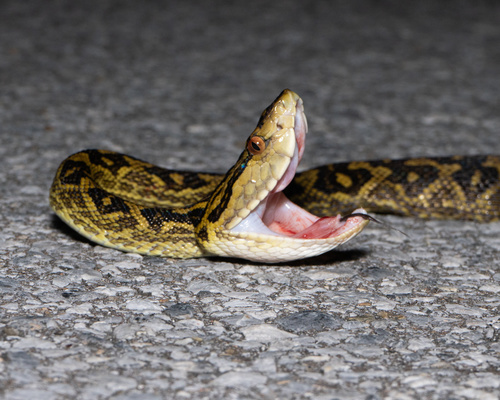
Habu
The Habu snake, with its striking yellow-green hue, is a master of stealth in Japan's Ryukyu Islands. Renowned for its heat-sensing pits, this viper plays a vital role in controlling rodent populations, showcasing both beauty and ecological importance.
7-10 years
Lifespan
Length: 1.2192 - 2.4384 m
Size
Yellow, Green
Color
High
Aggression
Least Concern
Conservation Status
Decreasing
Population Trend
Characteristics
Protobothrops flavoviridis, commonly known as the Habu, is a venomous pit viper found in the Ryukyu Islands of Japan. It is known for its distinctive yellow-green coloration and heat-sensing pit organs. The Habu inhabits forests and grasslands, primarily feeding on small mammals and birds.
Distribution Range of the Habu
Protobothrops flavoviridis, commonly known as the Habu snake, is native to the Ryukyu Islands of Japan. This includes Okinawa and the surrounding islands, such as Amami and Tokunoshima.
Habu's Habitat
Environmental Conditions
The Habu snake inhabits subtropical and tropical forest regions. These areas are characterized by high humidity and temperatures ranging from 20°C to 30°C (68°F to 86°F). The Ryukyu Islands experience a monsoon climate with distinct wet and dry seasons, providing ample environmental variation.
Ecological Niche
Protobothrops flavoviridis typically occupies lowland forests and wooded areas, often near streams and rocky crevices which provide cover and hunting grounds. This species is both terrestrial and somewhat arboreal, utilizing the dense vegetation for hunting small mammals, birds, and amphibians. It plays a crucial role in controlling the population of its prey species.
Copyright @ Nature Style Limited. All Rights Reserved.
 English
English